Abstract
This paper is an attempt to relate modifications observed in general and infant mortality rates with the dynamic changes in transmission induced by malaria control measures. The observations indicated relationships between the efficacy of control and a decrease in mortality. The daily parasitological inoculation rate was reduced from 0.00958 infective bites per individual before treatment to 0.00037 after treatment (a decrease of 96%). In two years, general mortality decreased from 23.9 to 13.5 deaths per 1000 population and infant mortality decreased from 157 to 93 per 1000 live births. This indirect benefit of malaria control deserves attention in a wider assessment of measures directed against vector-borne diseases.
Full text
PDF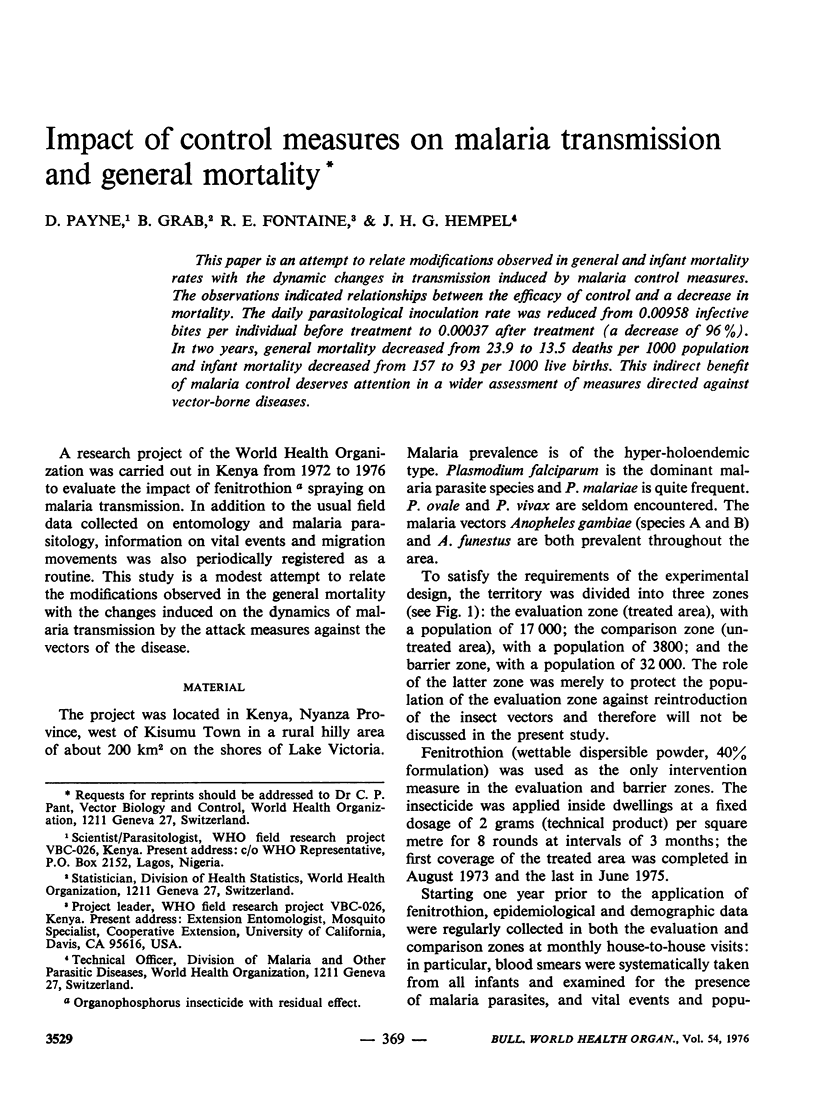
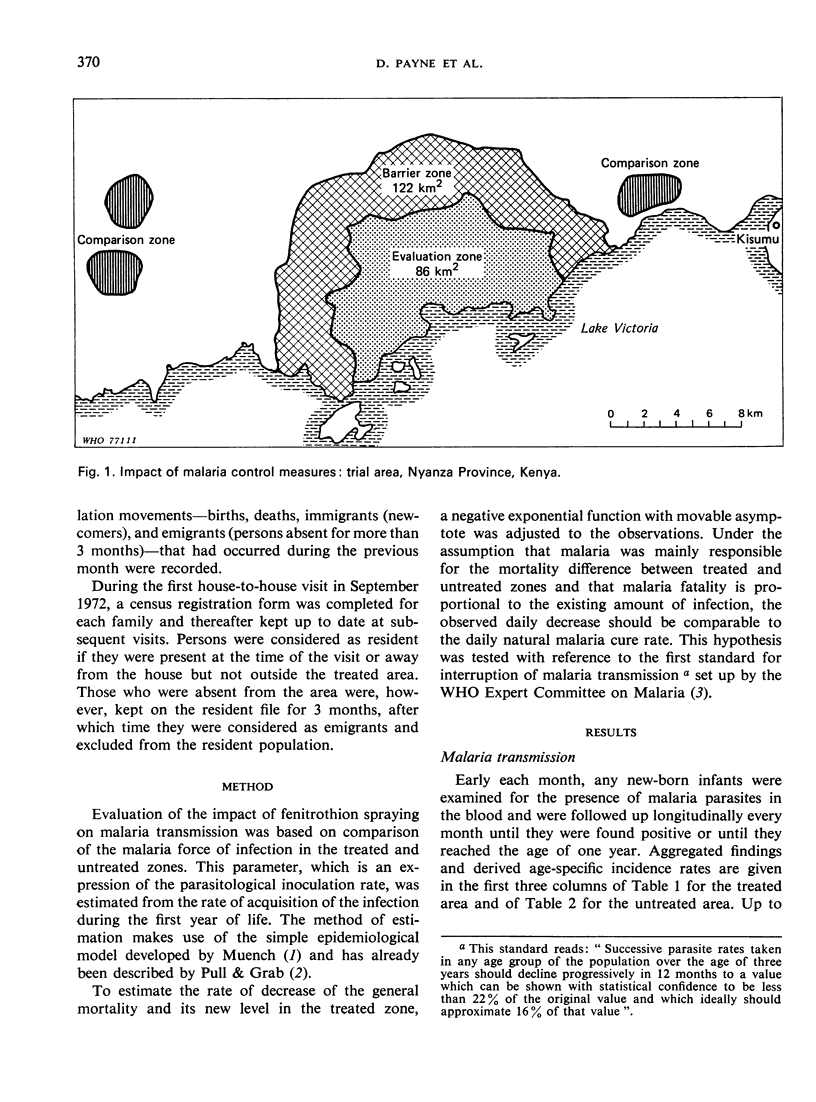
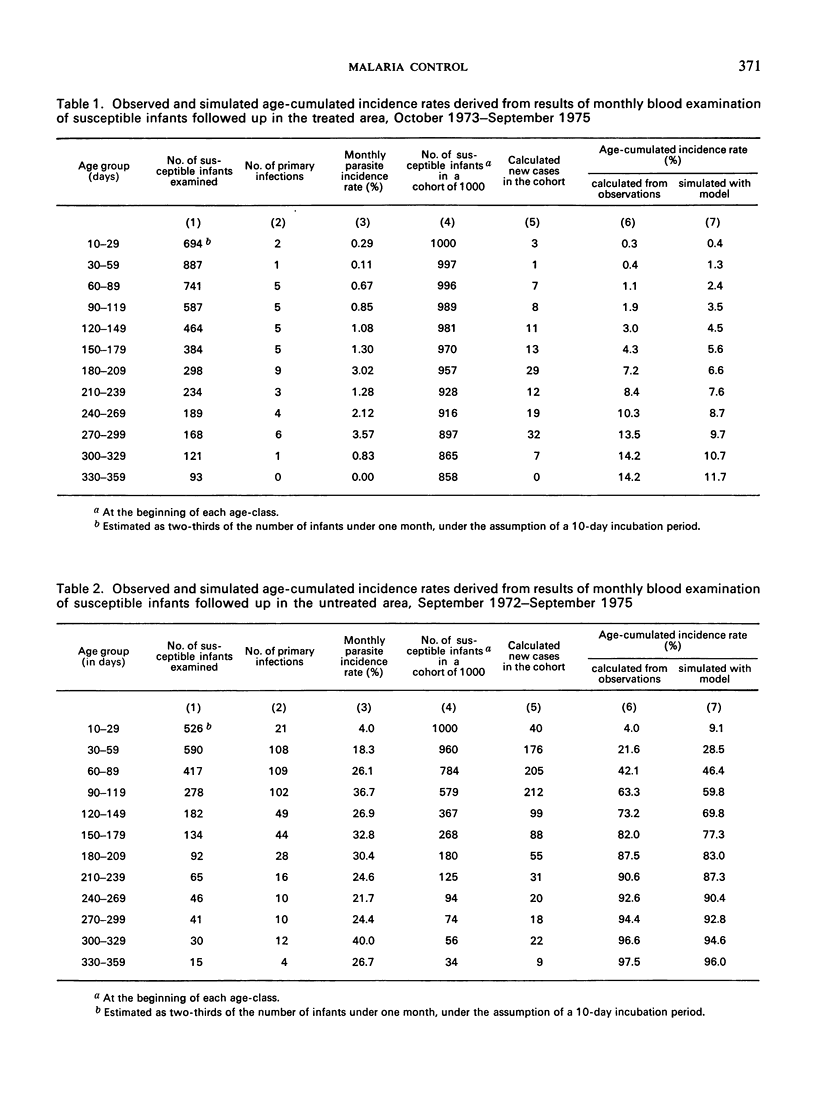
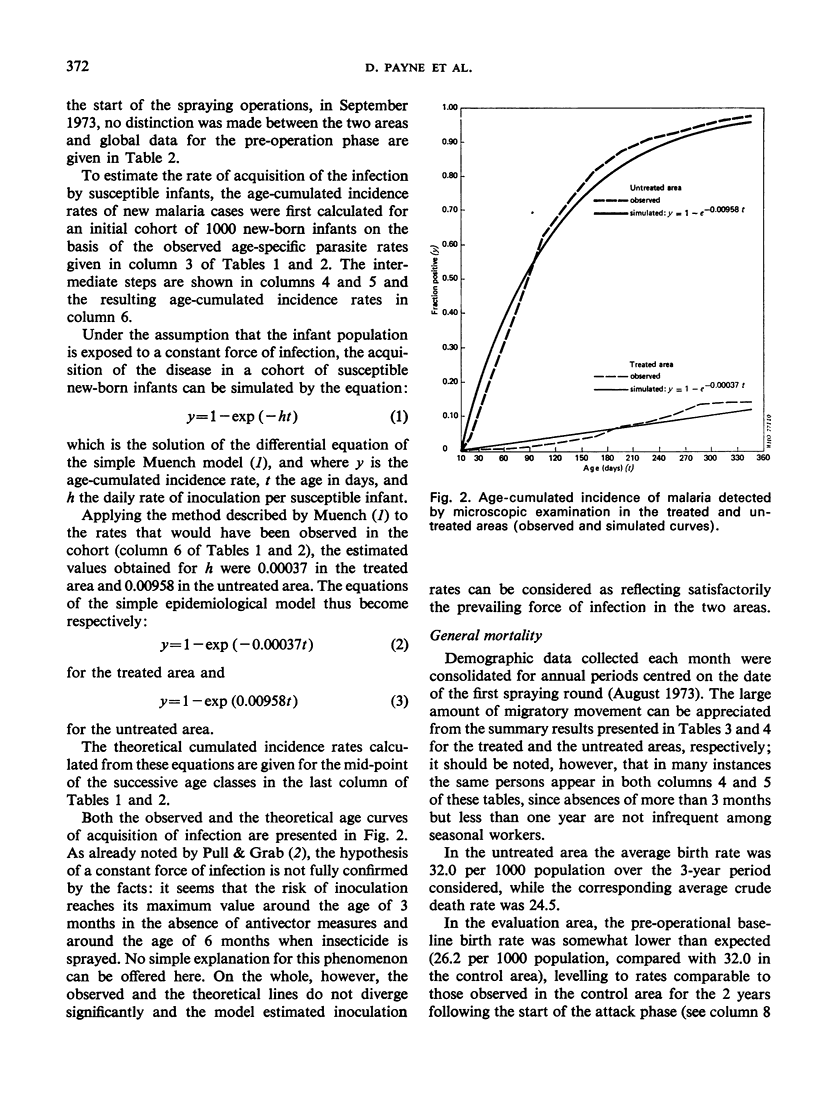
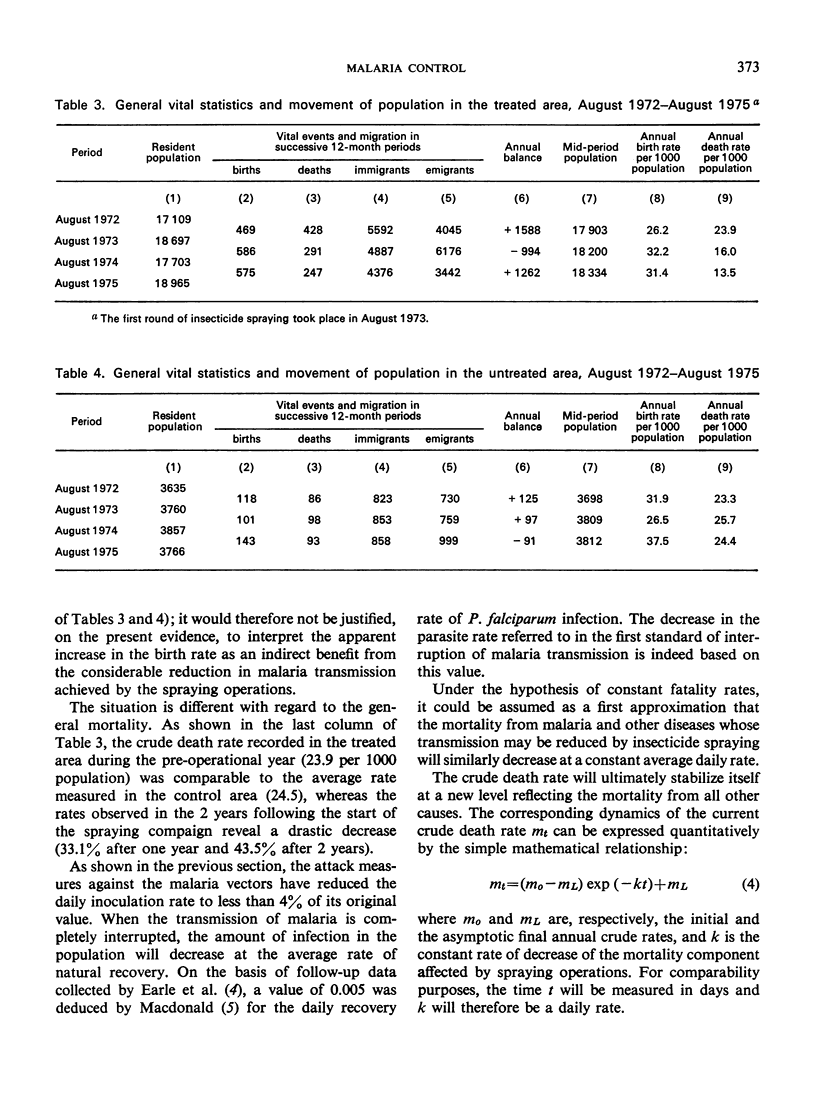
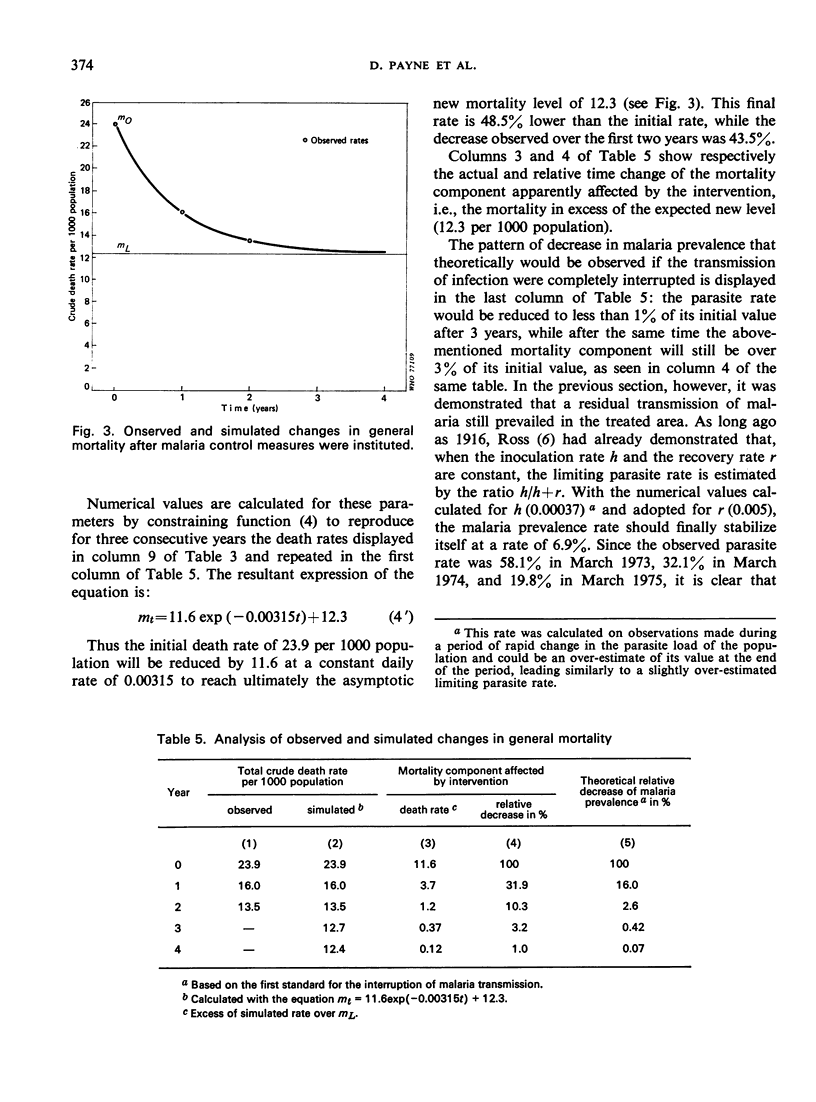
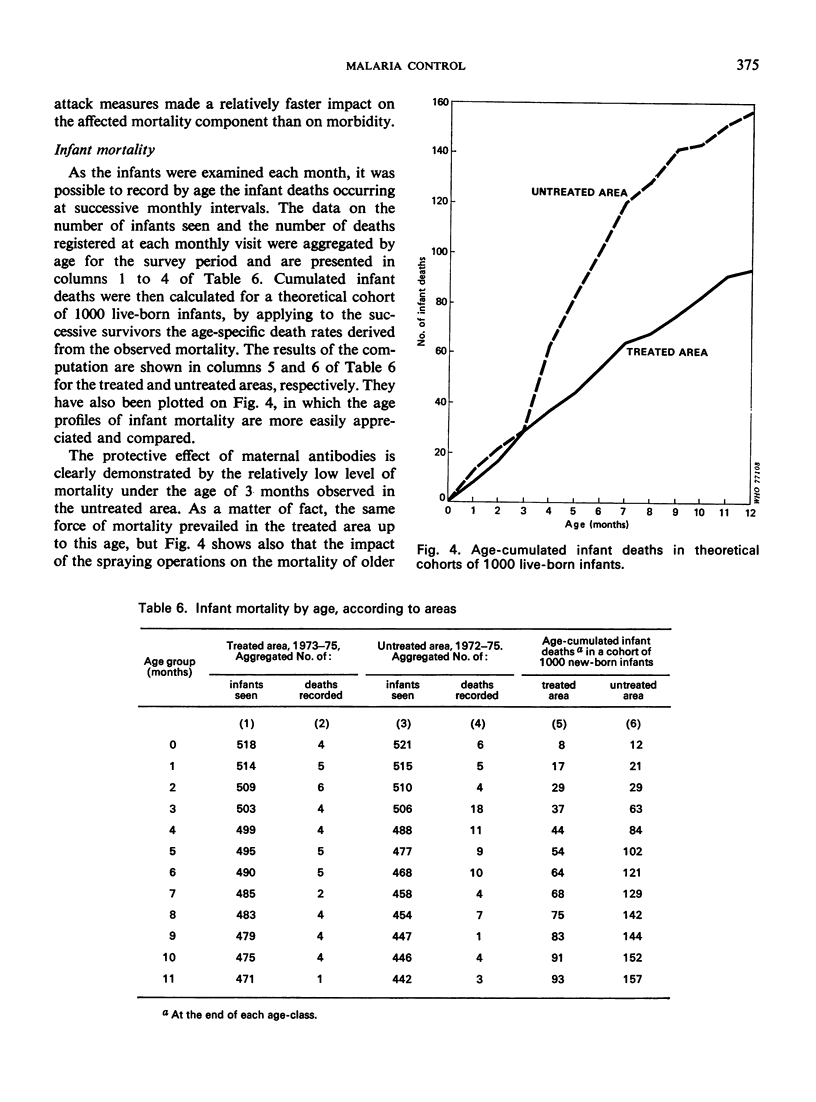
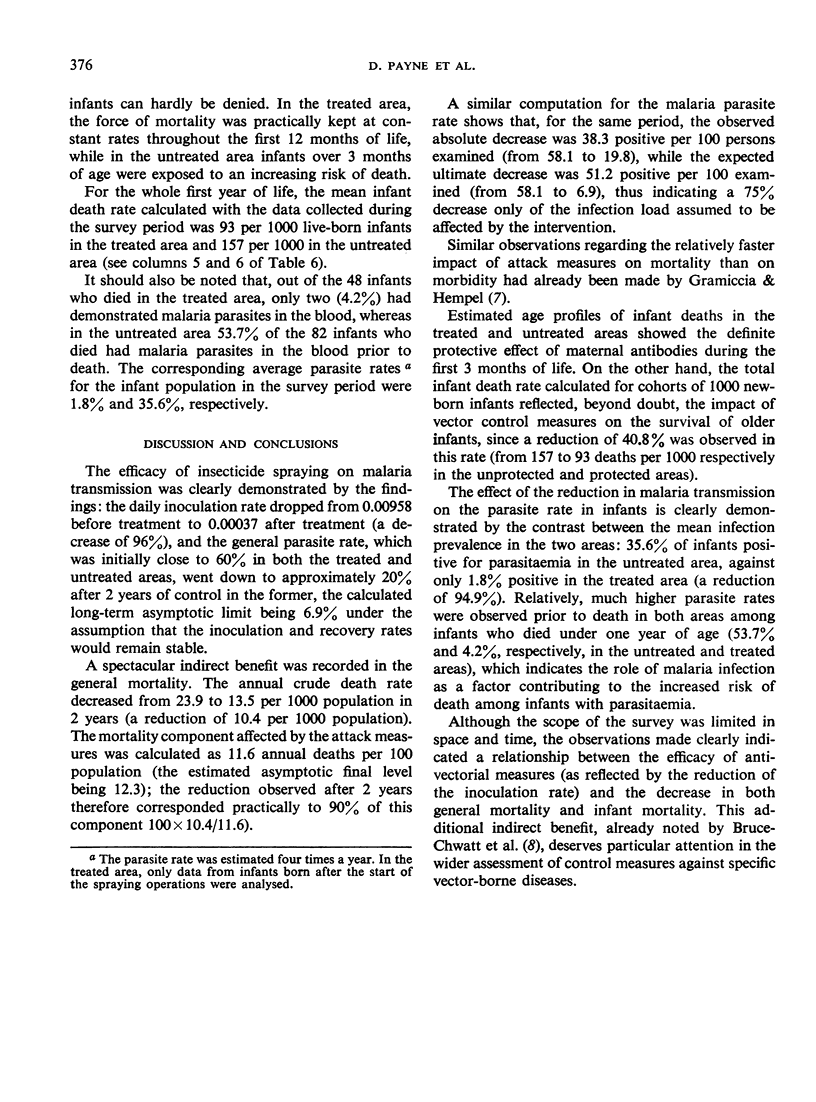
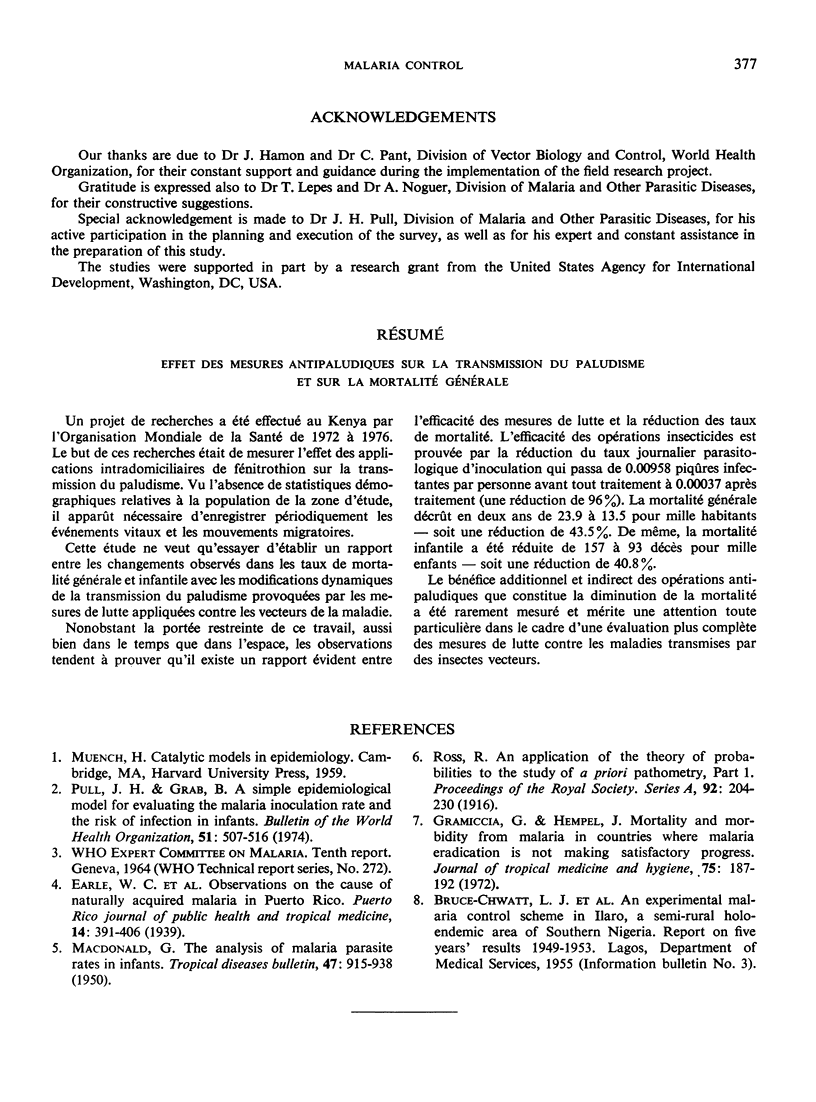
Selected References
These references are in PubMed. This may not be the complete list of references from this article.
- Gramiccia G., Hempel J. Mortality and morbidity from malaria in countries where malaria eradication is not making satisfactory progress. J Trop Med Hyg. 1972 Oct;75(10):187–192. [PubMed] [Google Scholar]
- MACDONALD G. The analysis of malaria parasite rates in infants. Trop Dis Bull. 1950 Oct;47(10):915–938. [PubMed] [Google Scholar]
- Pull J. H., Grab B. A simple epidemiological model for evaluating the malaria inoculation rate and the risk of infection in infants. Bull World Health Organ. 1974;51(5):507–516. [PMC free article] [PubMed] [Google Scholar]


